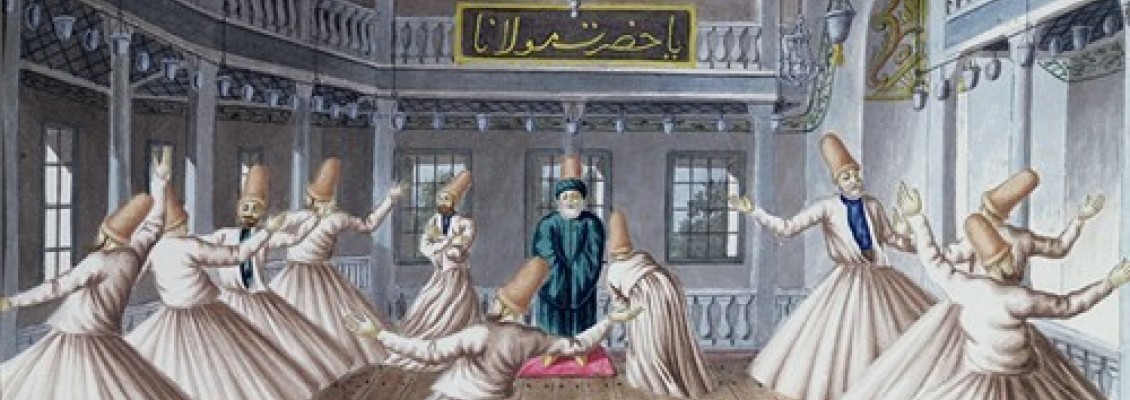
WHIRLING DERVISHES
Everyone is familiar with the image of the whirling dervish,
clad completely in white and spinning skillfully as if in a trance. However,
the dervish is much more than a visual spectacle, dating back over 700 years as
part of Sufism and the Mevlevi Order. The Mevlevi Order or Mawlawiyya (Turkish:
Mevlevilik or Mevleviyye) is a Sufi order that originated in Konya (Turkey),
and was founded by the followers of Jalaluddin Rumi, a 13th-century Persian
poet, Sufi mystic, and Islamic theologian. The Mevlevis are also known as the
“whirling dervishes” due to their famous practice of whirling as a form of
dhikr (remembrance of God). Dervish is a common term for an initiate of the
Sufi path; whirling is part of the formal sema ceremony, and the participants
are properly known as semazens.
Organised by Mevlânâ’s son, Sultan Walad, the order in Konya soon began
to expand into other towns with locally appointed leaders, and in its heyday
there were 114 tekke (monasteries) established throughout the Ottoman Empire,
including some in Belgrade, Athens, Cairo, Mecca, Baghdad, Damascus, and
Tabriz.
Originally, the
Whirling Ceremony was a weekly ritual for the remembrance of God, practised by
each Mevlevi community. Everyone would attend, including Mevlevi musicians,
women, and non-resident dervishes who chanted the Mevlevi “dhikr” or
remembrance, silently, in their hearts. As for the symbolism of the sema ritual
itself: the semazen’s camel hair hat (called a sikke) represents a tombstone of
the ego, while the white skirt (called a tenure) is the shroud of the ego. When
the dervish takes off his black cloak, he is meant to be spiritually reborn to
the truth. At the beginning of the ceremony the dervish holds his arms
diagonally to represent the number one, testifying God’s unity. While whirling,
the dervish’s arms are open with his right hand directed to the sky,
representing his readiness to receive God’s beneficence. The dervish’s left
hand is turning toward the earth, representing his willingness to convey God’s
spiritual gift to those witnessing the sema. It is also believed that while
revolving from right to left around his own heart, the dervish embraces all
humanity with love, since Sufis believe that the human being was created with
love in order to love.
Additionally, some of the main spiritual practices within
the Mevlevi Order are as follows:
·
Dhikr: invocation of the Divine Names which is
believed to purify the heart
·
Sema (sama): the whirling ceremony
·
Study of the Qur'an and Rumi’s
works (especially his poetic masterpiece the Mathnawi)
·
Spiritual conversation led by the shaikh
(sohbet)
·
Meditation (known as muraqabah in Islam)
·
Adab (developing courtesy and mindfulness)
·
Finally, if you want to experience and watch
whirling dervishes in Istanbul yourself, here are some places to go:
·
Galata Mevlevihanesi
·
Sultanahmet Sirkeci Train Station
·
The Hocapasa Cultural Centre
·
Dedeefendi Sufi House
·
Real Monastery in Fatih

Leave a Comment